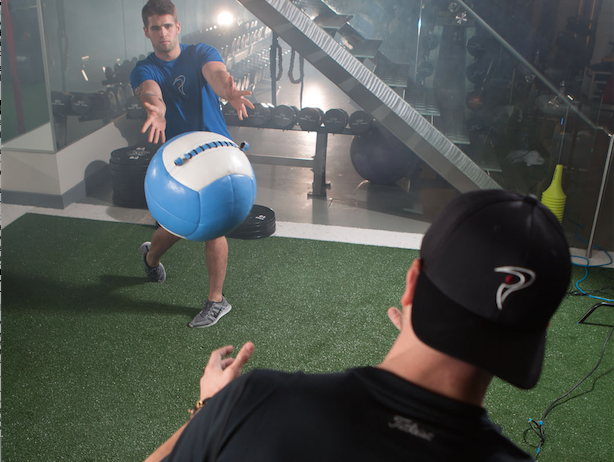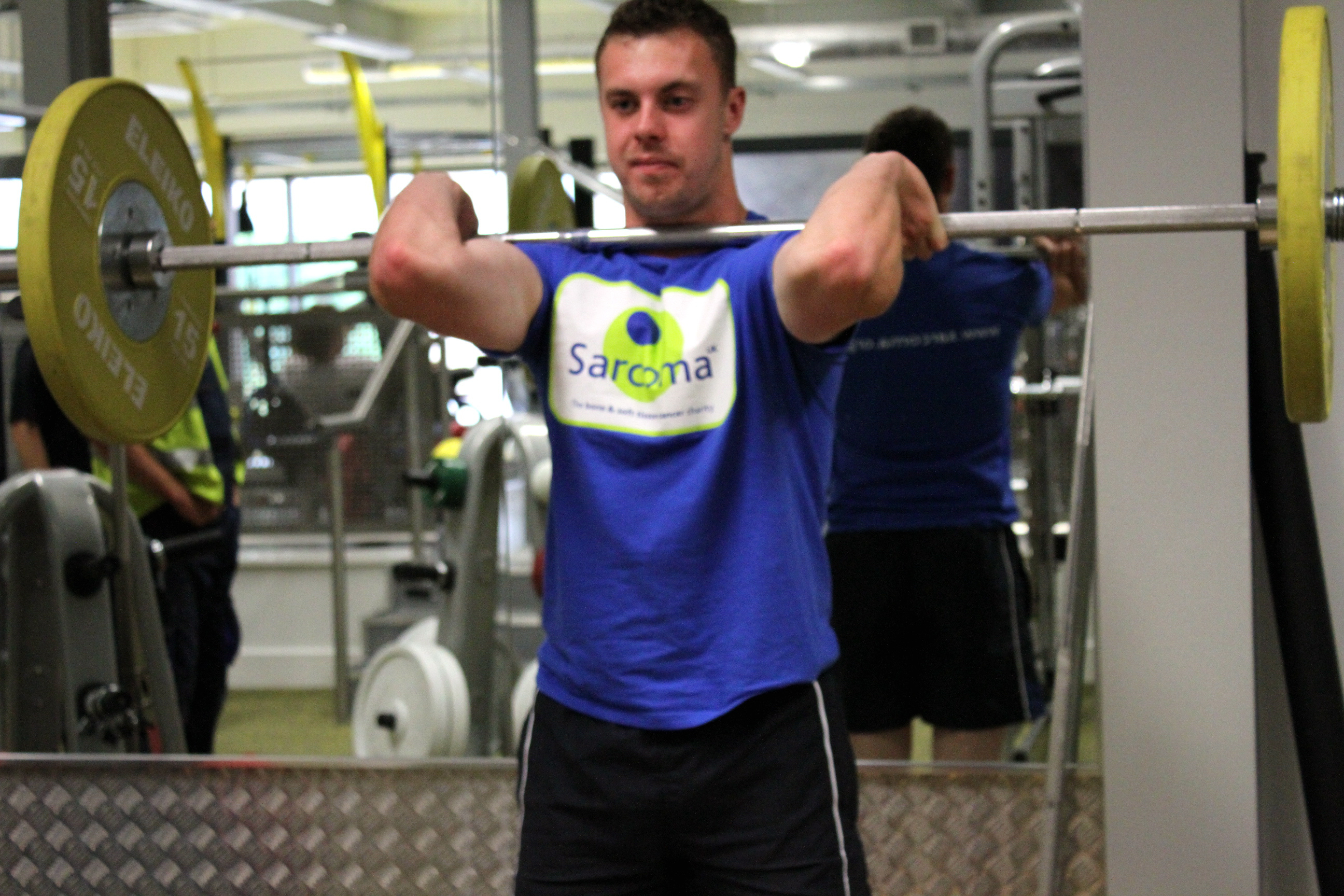IMPROVE MY GAME
Articles
4 Steps To More Rotational Power

Just looking at a golf swing will tell you the importance of rotational power. The lie angle of the club and the side on stance necessitates rotation, and if you’re going to drive the ball 300+ yards consistently you’re going to need some power!
For this reason you’ll see some sort of rotational and/or explosive exercise in almost all golf fitness programs. The med-ball is a great tool to increase overall athleticism, explosive power and ultimately clubhead speed. However before we can start crushing med-ball scoop tosses we must make sure we possess the adequate movement, coordination and balance to execute these moves properly
As Jason Glass says “Rotational power starts with a solid foundation built on quality movement”
When working on rotational power I have my athletes’ progress through 4 levels:
Level 1: Single-leg rotational med ball taps
This exercise serves to verify we have enough static balance to train the more dynamic drills to come later. Further, research has shown static balance proficiency is associated with improved with improved pitching performance in baseball, and there are plenty of parallels with that movement and the golf swing. Further, this movement starts to develop the motor control to rotate the upper body around the lower body in a somewhat dynamic motion.
Whilst this is low level I have pretty much every athlete I work with, weekend hacker to tour pro, perform this exercise just to check. It might be for just a few reps or for an entire training block, but I want to establish competence in this exercise before we move on.
Often I will pair this exercise with a t-spine mobilization drill. The t-spine is essential in proper rotation and working on t-spine mobility in this manner prepares us for the more dynamic t-spine rotation to come in level 2.
Level 2: Split stance anti-rotation scoop toss
This exercise introduces the concept of hip and trunk separation through good mobility, as opposed to excessive low back motion. As I’m sure you already know this is incredibly important in the golf swing, as Mike Boyles states “good golfers turn at the hips and the thoracic spine, bad golfers turn at the lumbar spine”
Your welcome to make use of a half kneeling med ball throw variation here, as this will provide variety to the direction of throw whilst still stabilizing the lower body and limiting hip turn to encourage separation and rotation through the t-spine. That said I prefer the split stance for most as I feel it better teaches golfers to have a firm front side to help accept force.
Level 3: Rotational med-ball scoop toss and rotational med-ball shot puts
These two are probably the corner stones of any good rotational power program. The sequencing is much the same for both of these as it is for the split stance scoop toss just with a little more dynamic weight shift, as Eric Cressey likes to say “efficient rotation is efficient rotation.”
We usually include both of these exercises in our programs, alternating between them, although one consideration should be elbow and shoulder health. The scoop toss is often easier on the elbow and shoulder than the shot put throw so if you have a history of issues/injuries in these areas it may be best to stick to just the scoop toss.
Most athletes will stay at this level for a good chunk of time. In fact even once an athlete has progressed to level 4 we will revisit these variations in lighter training blocks almost as a ‘break’ from the greater neurological and eccentric demands of the exercise in level 4. With this in mind we fluctuate sets and reps from week to week with the aim of increasing volume over time.
Sample progression:
Week 1: 2x5 (10 total reps)
Week 2: 3x4 (12 total reps)
Week 3: 4x4 (16 total reps)
Week 4: de-load week, omit exercise (de-loads are easier weeks in training that allow our body to recover and adapt from the demands training places upon it).
Week 5: 3x5 (15 total reps)
Week 6: 4x4 (16 total reps)
Week 7: 5x4 (20 total reps)
Week 8: de-load week, omit exercise.
*Change exercise after this training block or move on to level 4
Top tip:
Power and speed are the aims, so keep the ball light! We may increase the weight of the ball as a method of progression very occasionally but our aim is usually to throw harder and faster than increase the weight.
Level 4: Scoop toss and shot put throw progressions
This is where the real fun starts! These drills develop a great amount of athleticism, co-ordination and dynamic power, as well as looking pretty cool!
The exercises below take the corner stone exercises we used in level 3 and increase co-ordination, minimize ground contact time and increase eccentric pre loading respectively.
These represent our peak exercises; they are the most demanding of all the rotational throws, as the intensity has been increased from level 3 the volume decreases.
Sample progression:
Assuming carrying on from the sample progression in level 3, a sample progression here might look something like this:
Week 9: 4x4 (16 total reps)
Week 10: 4x3 (12 total reps)
Week 11: 3x3 (9 total reps)
Week 12: de-load week, omit exercise.
*Change exercise moving into next training block
Final thoughts:
Don’t rush through these levels, it’s about doing these exercises well to get the most out of them. Dominate each level before you move on!
You get out what you put in, so take what you’ve learnt here apply it to your own needs and your own body, work hard and start developing some serious rotational power.
Lastly, make sure to throw from both sides of the body with equal effort and intensity. You can only accelerate as fast as you can decelerate so you need to be strong and fast in both directions.

Nick Buchan is a UK Strength & Conditioning Association member, golf coach, AGMS graduate and TPI Certified expert. His goal is to help golfers become stronger and play better by delivering the best in cutting edge training advice. Website: www.strongergolf.org